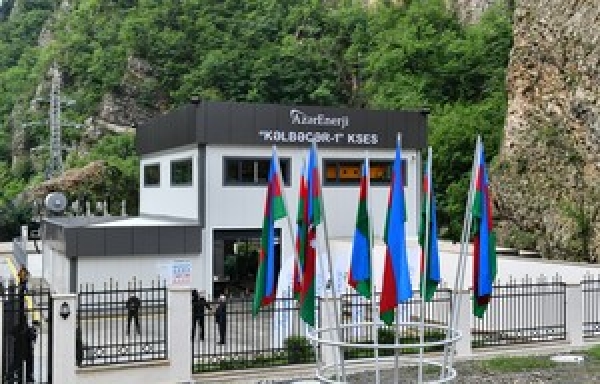IN THE ECONOMIC CONTEXT OF AZERBAIJAN
The construction of the infrastructure necessary for the population’s return and building of the economy, including in the agricultural sector, is now actively running in the Karabakh territories liberated within 44 days. Investments with a high technological potential are attracted to these lands in order to create high-value-added and export-oriented industries, and provide citizens with permanent jobs. The revival of the devastated lands is considered in the context of development of Azerbaijan’s economy. The «2022-2026 Strategy of Socio-economic Development of the Azerbaijan Republic», approved by President Ilham Aliyev, implies the active reintegration of the Karabakh and East Zangezur economic regions into the Azerbaijani economy.
On July 7, President Ilham Aliyev signed a decree on the new division of economic regions in Azerbaijan. According to the decree, their number rose from 11 to 14. Baku, the country’s capital, was identified as a separate economic region. Thus, established were the Karabakh and East Zangezur economic regions. The Karabakh economic region has included the following cities: Khankendi, Agjabedi, Agdam, Barda, Fuzuli, Khojaly, Khojavend, Shusha, Terter. The decree states that a decision to create this region was passed in order to ensure the restoration and rapid development of the ancient land which has a rich cultural and historical heritage and picturesque nature.
The other recently established East Zangazur district includes liberated territories such as Jebrail, Kalbajar, Gubadly, Lachin and Zangilan. These cities are located in the eastern part of the Zangezur plateau surrounded by the Zangezur mountain range and extending over a vast territory from Lachin and Kelbajar toward Nakhchivan located on the border with Armenia. It is worth reminding that these territories were historically located within a single area. For many years they were considered a part of the Zangezur district established in 1861, and were linked by traditional socio-economic, historical and cultural relations. This fact intensified the need for uniting into a single economic region.
region’s economy
According to the strategy, special attention will be paid to the production of high-quality goods and services, which will accelerate the integration of Azerbaijan’s economy into the global value chain. The document also outlines measures to expand non-oil and gas export and further diversify it so that to have its annual volume increased by 85% in 2026, compared to 2021 figures. A draft national export strategy has also been worked out in order to promote the export-oriented economic development of the country. About 120 high export potential products, focused on more than 20 target markets, have been identified under the strategy. At the same time, remaining in the focus are other potential sectors or markets that local exporters will target.
According to the Strategy, the economy will develop in the region in compliance with the «smart» business models using closed-cycle production. On the other hand, local minerals will be included into the turnover within the framework of the public-private partnership. The state will also focus on the development of the tourism potential of Karabakh and East Zangezur.
In parallel with the infrastructure construction, there will be trade, service, logistics centers and industrial parks created in the region. They will have modern production infrastructure and support private business initiatives. Entrepreneurs will receive exemption from tax and customs duties, as well as access to preferential loans and investment insurance.
Another direction of development of the liberated territories is the creation of environmentally friendly and cost–effective renewable energy sources in accordance with the “green energy zone” concept. The final goal of all the works is the constant growth of the share of Karabakh and Eastern Zangezur in Azerbaijani production, exports and employment.
Region’s hydropower industry
Earlier, almost 7000 enterprises were closed down in Karabakh due to the 30-year occupation. They provided 24% of income from grain crops, as well as accounted for 41% of wine production, 46% of potatoes, 18% of meat products and 34% of dairy products. In the territories, which used to be under occupation, there are various rich deposits of minerals, such as gold, copper, mercury, chromite, lead and zinc.
Although the share of the region in the total GDP of Azerbaijan has decreased down to 0.1% during the occupation, in the near future it will be possible to sell agricultural and industrial products worth $1.76 billion in the Jabrayil, Kalbajar, Gubadli, Lachin and Zangilan districts.
The liberated territories also have significant potential for renewable energy sources, especially hydropower. About 2.56 billion cubic meters of water, or 25% of Azerbaijan’s local water resources, are formed in Karabakh, which creates opportunities for the creation of hydroelectric power plants (HPPs). Azerbaijan gained control of the hydroelectric power plants during the 44-day war. Many of these power plants have been reconstructed, while others are undergoing restoration work. Karabakh also has significant potential in the solar and wind energy industry. According to preliminary estimates of the International Renewable Energy Agency, the liberated areas have a potential of more than 4,000 megawatts of solar energy and up to 500 megawatts of wind energy. Kalbajar and Lachin districts have great potential for wind energy, while Zangilan, Jabrayil and Fuzuli districts are rich in solar energy potential.
Construction of an integrated transport infrastructure is one of the main directions of the program for the restoration of the liberated territories. The Fuzuli International Airport, the first airport in Karabakh, has already been built and test flights have been conducted, the runway strip of this airport is 3,000 meters long and 60 meters wide. Besides, the foundations of two other international airports were laid in the Zangilan and Lachin districts of Karabakh. Azerbaijan has also begun working on the restoration and expansion of the network of local roads and railways in the liberated territories: some highways have already been put into operation. They will make it possible to reach Karabakh from both the northern, southern and eastern directions, and thereby turn it into one of the promising economic crossroads of Transcaucasia.





